The popular Swedish sport you probably know nothing about
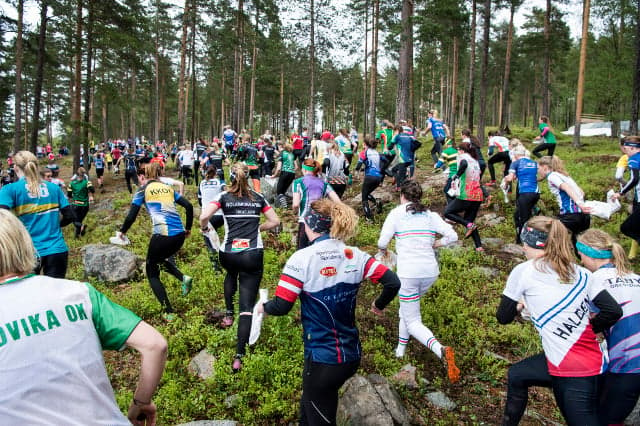
Outdoor activities are part of the Swedish way of life, and with 75,000 registered practitioners, orienteering is one of the most popular. What's that, you ask? Let's get to know this curious sport.
What is orienteering?
With origins in Sweden and often highlighted as the "thinking sport", orienteering involves map reading and decision-making in addition to a considerable workout. Here's how the International Orienteering Federation (IOF) defines the sport:
"The basic idea in orienteering is to proceed from course start to finish by visiting a number of control points in a predetermined order with the help of a map and compass. In order to choose the best possible route, orienteers look at the characteristics of the terrain, and the winner is determined by the fastest time in completing the course. What is unique to orienteering is that an orienteer must navigate and make quick decisions while running at high speed."
READ ALSO: Orienteering and other words you didn't know English borrowed from Swedish
There are actually a number of sub-disciplines in orienteering, but for Sweden the most popular are foot orienteering and ski orienteering.
The maps used are topographic and very detailed, with a scale ranging from 1:4000 to 1:15000. The terrain is usually forest, but can also be an open area such as heaths or mountains. These days there are also more and more orienteering competitions in a shorter format happening around cities and urban areas.
Orienteering is usually an individual sport, but it can also take the form of a relay. In that version the orienteers in each team complete different sections and the first team which makes it to the finish wins the race.
Long-distance and middle-distance formats are the most traditional, but there is a growing interest in the sprint format, where competitors can increasingly be seen racing through urban environments.
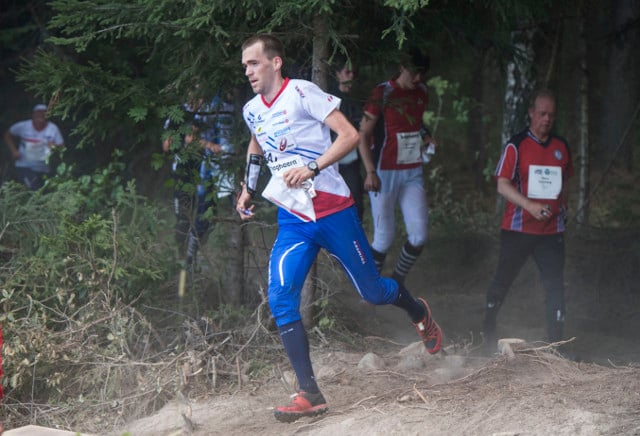
The 2017 O-Ringen. Photo: Tommy Pedersen/TT
Why is this sport so popular in Sweden?
Sweden is one of the countries where orienteering is most developed. There are several explanations for the interest Swedes have in the sport.
Here's how Swedish elite orienteer Oskar Sjöberg explained it to The Local:
"We have something called 'allemansrätten' which means everyone can go around in the forest as they wish. That creates an opportunity to also compete in the forest, which is not possible in all countries. We also have lots of beautiful forests that are not damaged by infrastructure or harvesting (cultivation?).The combination of a long tradition, including major competitions as O-Ringen (more on that later), and good opportunities to train make Sweden a strong orienteering nation."
The most obvious explanation is that Sweden created orienteering, first emerging within the country's military corps. Land navigation was part of military training and it is the military who started to organise competitions in the late 19th century. The first orienteering competition was held for the Swedish military on the 28th of May 1893 in the Stockholm garrison games.
READ ALSO: 'I came to Sweden for orienteering and never left'
Later, in 1901 the first public competition in Sweden was held. Orienteering as a sport in its own right started to develop in the early 1900s mainly in Sweden and the neighbouring Nordic countries. A key player in improving the accessibility of orienteering was Swedish Major Ernst Killander. Referred to as the "father of orienteering", he decided to combine athletics with the principles of land navigation in order to get youngsters interested in athletics.
Orienteering's spread to other countries happened from the second half of the 20th century onwards. The international orienteering federation (IOF) was founded in 1961 with 10 member countries, and during this time orienteering really started to develop globally, with a number of new member countries appearing and organizing championships. The spread further afield did not weaken the position of the Nordic countries and especially Sweden in the hierarchy however.
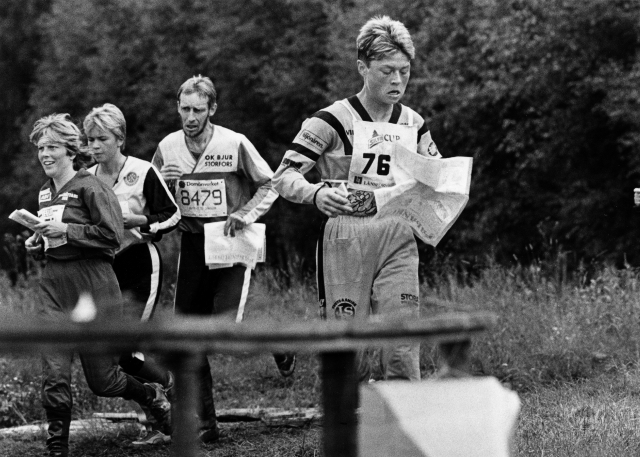
O-Ringen in Falun in 1985. Photo: Ingvar Karmhed/SvD/TTOrienteering in Sweden today
Orienteering in Sweden today
The Swedish Orienteering Federation has approximately 75,000 members in 600 clubs, and the number is growing each year. The federation says it can see a positive trend with an increase of over 10,000 members during the last four years.
With such a developed federation, lots of competitions are organised in every part of Sweden throughout the year. Two major global events are among them.
Since 1965 Sweden has organized the world's largest annual orienteering event O-Ringen. The five day competition attracts between 15-20,000 orienteers from "top international orienteers to novices, from highly competitive veterans to recreational orienteers" according to the organizers.
The second major event is Tiomila, taking place each year since 1945 and attracting the best orienteers in the world. For men it consists of a 10-leg relay including night and daylight orienteering, while for women there are five daylight legs.
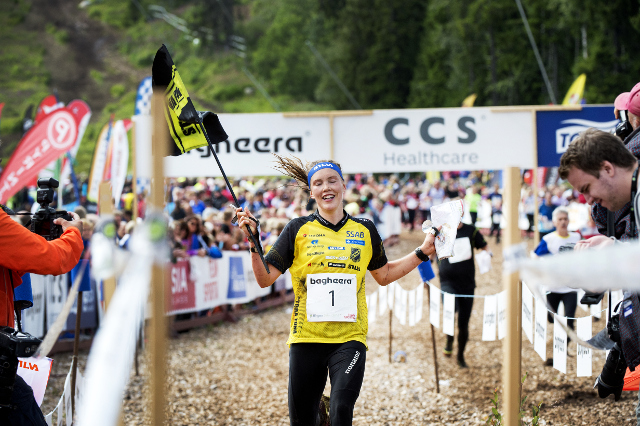
Tove Alexandersson, a Swedish orienteer among the best in the world, winning O-Ringen in 2016. Photo: Ulf Palm/TT
The modernization of the sport
With the use of GPS tracking it is now getting more common to see both Swedish and international orienteering races on TV and online in Sweden, particularly as the Swedish national team is doing very well at international level.
Some people take the sport very seriously, and Oskar Sjöberg is living proof. Selected several times to compete in Swedish colors, this elite runner was "born into orienteering rather than starting it a certain age" as he explained to The Local.
"Orienteering combines my love for sports, nature, maps and social life. I really enjoy that each terrain is different and that I have to travel a lot to experience different competitions. Take swimming, football or track and field for example: it does not matter so much where in the world you are, it is always the same pool or field. Orienteering offers you so much more in terrain variation. Orienteering is also a 'true' sport in the way that everyone competes fairly. There is not really any money to win so basically there are also no doping cases."
Some people don't grasp the sporting nature of orienteering, but elite competitors are as stringent as athletes in other disciplines.
Sjöberg's winter preparation, which he tries to fit into his schedule as a hydro engineer, is a good example:
"During winter I try to get continuity in training, the most important is to stay injury-free and healthy. I try to do two to three long runs of two to three hours a week, plus two to three interval sessions, two to three strength sessions and some technical trainings with maps. Basically that means 14-16 hours of training a week spread over nine to 10 sessions."
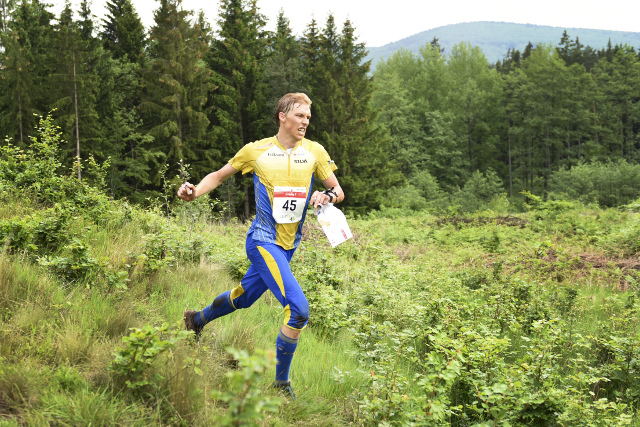
Oskar Sjöberg finished 4th at the middle distance of the European Championships in Czech Republic in 2016. Photo: Stina Loman/TT
The last word
Now that you know everything about orienteering, Oskar urges you to try it.
"Orienteering is a great way to meet new people and to get out and see nature at the same time. As we are competing in the forest we travel to the most unusual places and see things many people would never see. The social aspect is very important, that's what drives most of the people in this sport. It is also a very nice way to 'fool' your body during exercise, because you need to keep focus on the map and you always think of what you are doing. You don't really think so much about the fact that you are running at the same time. Compared to just running it is also more varied in terms of terrain, and moving around in the forest provides strength training at the same time."
Comments
See Also
What is orienteering?
With origins in Sweden and often highlighted as the "thinking sport", orienteering involves map reading and decision-making in addition to a considerable workout. Here's how the International Orienteering Federation (IOF) defines the sport:
"The basic idea in orienteering is to proceed from course start to finish by visiting a number of control points in a predetermined order with the help of a map and compass. In order to choose the best possible route, orienteers look at the characteristics of the terrain, and the winner is determined by the fastest time in completing the course. What is unique to orienteering is that an orienteer must navigate and make quick decisions while running at high speed."
READ ALSO: Orienteering and other words you didn't know English borrowed from Swedish
There are actually a number of sub-disciplines in orienteering, but for Sweden the most popular are foot orienteering and ski orienteering.
The maps used are topographic and very detailed, with a scale ranging from 1:4000 to 1:15000. The terrain is usually forest, but can also be an open area such as heaths or mountains. These days there are also more and more orienteering competitions in a shorter format happening around cities and urban areas.
Orienteering is usually an individual sport, but it can also take the form of a relay. In that version the orienteers in each team complete different sections and the first team which makes it to the finish wins the race.
Long-distance and middle-distance formats are the most traditional, but there is a growing interest in the sprint format, where competitors can increasingly be seen racing through urban environments.

The 2017 O-Ringen. Photo: Tommy Pedersen/TT
Why is this sport so popular in Sweden?
Sweden is one of the countries where orienteering is most developed. There are several explanations for the interest Swedes have in the sport.
Here's how Swedish elite orienteer Oskar Sjöberg explained it to The Local:
"We have something called 'allemansrätten' which means everyone can go around in the forest as they wish. That creates an opportunity to also compete in the forest, which is not possible in all countries. We also have lots of beautiful forests that are not damaged by infrastructure or harvesting (cultivation?).The combination of a long tradition, including major competitions as O-Ringen (more on that later), and good opportunities to train make Sweden a strong orienteering nation."
The most obvious explanation is that Sweden created orienteering, first emerging within the country's military corps. Land navigation was part of military training and it is the military who started to organise competitions in the late 19th century. The first orienteering competition was held for the Swedish military on the 28th of May 1893 in the Stockholm garrison games.
READ ALSO: 'I came to Sweden for orienteering and never left'
Later, in 1901 the first public competition in Sweden was held. Orienteering as a sport in its own right started to develop in the early 1900s mainly in Sweden and the neighbouring Nordic countries. A key player in improving the accessibility of orienteering was Swedish Major Ernst Killander. Referred to as the "father of orienteering", he decided to combine athletics with the principles of land navigation in order to get youngsters interested in athletics.
Orienteering's spread to other countries happened from the second half of the 20th century onwards. The international orienteering federation (IOF) was founded in 1961 with 10 member countries, and during this time orienteering really started to develop globally, with a number of new member countries appearing and organizing championships. The spread further afield did not weaken the position of the Nordic countries and especially Sweden in the hierarchy however.

O-Ringen in Falun in 1985. Photo: Ingvar Karmhed/SvD/TTOrienteering in Sweden today
Orienteering in Sweden today
The Swedish Orienteering Federation has approximately 75,000 members in 600 clubs, and the number is growing each year. The federation says it can see a positive trend with an increase of over 10,000 members during the last four years.
With such a developed federation, lots of competitions are organised in every part of Sweden throughout the year. Two major global events are among them.
Since 1965 Sweden has organized the world's largest annual orienteering event O-Ringen. The five day competition attracts between 15-20,000 orienteers from "top international orienteers to novices, from highly competitive veterans to recreational orienteers" according to the organizers.
The second major event is Tiomila, taking place each year since 1945 and attracting the best orienteers in the world. For men it consists of a 10-leg relay including night and daylight orienteering, while for women there are five daylight legs.

Tove Alexandersson, a Swedish orienteer among the best in the world, winning O-Ringen in 2016. Photo: Ulf Palm/TT
The modernization of the sport
With the use of GPS tracking it is now getting more common to see both Swedish and international orienteering races on TV and online in Sweden, particularly as the Swedish national team is doing very well at international level.
Some people take the sport very seriously, and Oskar Sjöberg is living proof. Selected several times to compete in Swedish colors, this elite runner was "born into orienteering rather than starting it a certain age" as he explained to The Local.
"Orienteering combines my love for sports, nature, maps and social life. I really enjoy that each terrain is different and that I have to travel a lot to experience different competitions. Take swimming, football or track and field for example: it does not matter so much where in the world you are, it is always the same pool or field. Orienteering offers you so much more in terrain variation. Orienteering is also a 'true' sport in the way that everyone competes fairly. There is not really any money to win so basically there are also no doping cases."
Some people don't grasp the sporting nature of orienteering, but elite competitors are as stringent as athletes in other disciplines.
Sjöberg's winter preparation, which he tries to fit into his schedule as a hydro engineer, is a good example:
"During winter I try to get continuity in training, the most important is to stay injury-free and healthy. I try to do two to three long runs of two to three hours a week, plus two to three interval sessions, two to three strength sessions and some technical trainings with maps. Basically that means 14-16 hours of training a week spread over nine to 10 sessions."

Oskar Sjöberg finished 4th at the middle distance of the European Championships in Czech Republic in 2016. Photo: Stina Loman/TT
The last word
Now that you know everything about orienteering, Oskar urges you to try it.
"Orienteering is a great way to meet new people and to get out and see nature at the same time. As we are competing in the forest we travel to the most unusual places and see things many people would never see. The social aspect is very important, that's what drives most of the people in this sport. It is also a very nice way to 'fool' your body during exercise, because you need to keep focus on the map and you always think of what you are doing. You don't really think so much about the fact that you are running at the same time. Compared to just running it is also more varied in terms of terrain, and moving around in the forest provides strength training at the same time."
Join the conversation in our comments section below. Share your own views and experience and if you have a question or suggestion for our journalists then email us at [email protected].
Please keep comments civil, constructive and on topic – and make sure to read our terms of use before getting involved.
Please log in here to leave a comment.